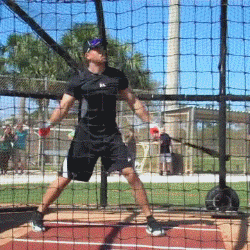- Aug 28, 2012
- 457
- 0
Jbooth (any anyone else who likes to play along at home),
When you stand up, feet shoulder width apart, weight evenly distributed, knees bent, facing a wall, toes pointed at wall and hips facing wall... can you move your right thigh (femur) back and forth with IR and ER action? Your feet remain pointed at the wall, the weight remains relatively evenly distributed, and your hips do not turn (nor do they shift laterally) but the relationship between femur and socket changes. Your knee will move in space going from a "knock-kneed" position when the femur is in IR to a "bow-legged" position when the femur is in an ER position. I think this movement is not abduction or adduction as there is no lateral shifting of the hips or shifting of weight, it's just an IR to ER and back to IR movement of the femur in the socket. Are you with me? Can you replicate this movement?
Cheers,
Noontime
From the position that you describe; Moving to knock-kneed is an adduction movement of the femur, and moving the knee out is abduction. To internally rotate, or externally rotate from that position, the foot must pivot.
So what you are saying is that when I am in the athletic stance with my knees bent, that muscle action causing that movement I describe is really adduction and abduction. I am with you. Thank you for clarifying that. Similarly, if I was seated in a chair and I did the same movement from knock-kneed to bow-legged, that muscle action is abduction and adduction.
Really what we are talking about is the resulting movement from abduction and adduction while the femur is in a flexed position yes?
JBooth, any follow up on this?
The inward "bump" that Stanton does before this BP swing is adduction yes?



